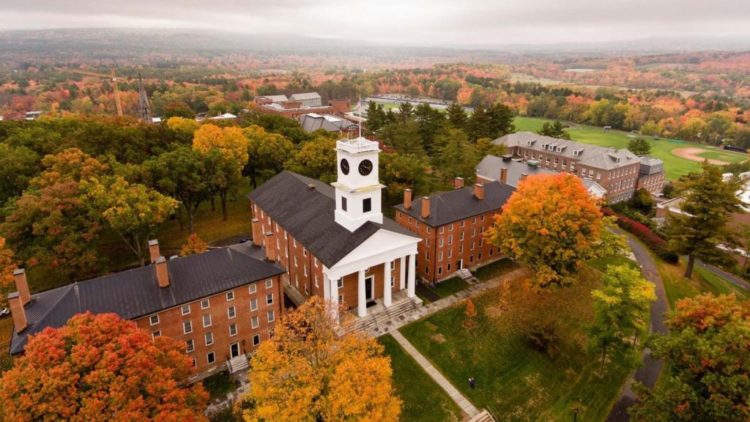
by Sophia Salazar
When you think of your ideal college experience, do you imagine yourself following a straight academic track, or do you want the flexibility to design your own course load and explore different subjects? Do you picture yourself attending large lectures or small seminars, where the professor knows you by name? Do you want to live on a sprawling campus that can be mistaken for a small city, or a smaller one with a student body size of an average Los Angeles high school? If you found yourself gravitating to the latter options, you should consider applying to a liberal arts college.
What is a liberal arts college? Traditionally, liberal arts colleges have focused on providing an education that is broad in scope in order to provide students with general knowledge, values, and critical thinking skills to apply in society. Proponents of liberal arts colleges argue that they offer students learning opportunities for the sake of pursuing knowledge in itself, rather than to prepare them for a particular career. Theoretically, while the broadness of a liberal arts education is meant to apply to any career, its main purpose is to enlighten the “soul.” This ideal is the purpose behind my alma mater Amherst College’s motto: Terras Irradient (Latin for “Let them enlighten the lands”).
While this purpose of a liberal arts education is noble, critics of the liberal arts sometimes struggle to imagine how its value translates into modern society. With rapid developments in STEM fields, there’s an ongoing demand for scientific innovation that large research universities have paved the way for. Small liberal arts colleges can be easily overlooked because of the belief that they lack state-of-the-art grounds and facilities that larger universities may have. However, there are two big misconceptions here: first, that a liberal arts education is irrelevant to the demands of the present moment, and second, that choosing a liberal arts school robs students of potential resources that can help their academic and career trajectory.
The argument for the continued utility of a liberal arts education in a STEM-powered world is that ethical and critical thinking is crucial in leadership during transformational times. Ethical dilemmas have engrossed the tech and business world where the generalist and multidisciplinary perspectives a liberal arts education offers may best fit in. Beyond that, a liberal arts education can still provide a foundational education in the arts, sciences, and humanities that can prepare students for the needs of the current moment while not pigeonholing them in an evolving job vocation.
Moreover, many top-ranking liberal arts colleges have high endowments per student that are comparable to other top-ranking universities. For example, of the top ten colleges and universities that have the highest endowment per student for 2021, liberal arts colleges like Pomona College and Swarthmore rival Harvard, Yale, and Stanford in student investment. Even if a liberal arts college has a more modest endowment, they are likely to cater their resources to their small undergraduate student population in ways that larger universities might not. While large research universities might have funding and research opportunities available for its undergraduate and graduate students, liberal arts colleges can offer such research opportunities solely to its undergraduate students. The payoff of a liberal arts college is higher than you might expect, too. A Georgetown University study ranking the return on investment (ROI) of 4,500 U.S. colleges and universities found that the median ROI of liberal arts colleges was $200,000 higher than the median for all colleges. The 40-year median ROI of liberal arts colleges also edged out four-year engineering, technology, and business management schools.
If you find yourself finding your stride at a liberal arts college, they can offer an added bonus that may be tougher to find at a larger university: a tight-knit community that you can rely on well after graduation. According to U.S. News and World Report data, most ranked National Liberal Arts Colleges have fewer than 2,500 undergraduates enrolled. Because of the small community that they tend to offer, liberal arts colleges tend to offer strong alumni networks that you can take advantage of as a student or graduate. Name recognition tends to go a lot farther when connecting with someone who went to your school if you went to a small, rural college like Bowdoin than if you went to UC San Diego. While it’s likely to find ways to network at a larger campus through clubs, sports, or Greek life, if you prefer navigating a smaller campus environment, a liberal arts college might be better suited for you. That being said, if you’re considering attending a liberal arts college, you will be spending four years of your life in close proximity with a small student body, so make sure it’s the right fit!
Ready to find out which liberal arts colleges may be a good fit for you? Reach out to admissions representatives, current students, and even professors to start getting more information (this can also underscore your interest in the school if you end up applying). If you’re stuck between a liberal arts college and research university, check out popular consortiums (or clusters of colleges) like the Claremont Colleges, Five College Consortium, or the Tri-College and Quaker Consortiums to see what academic and social partnerships might exist among groups of schools. Some liberal arts colleges also have special exchange or cooperative programs with larger universities for certain subjects, such as Occidental College and Columbia University for law and engineering programs.
There are endless possibilities to explore your interests and set yourself up for success at a liberal arts college. Consider these schools in your college application pool!
